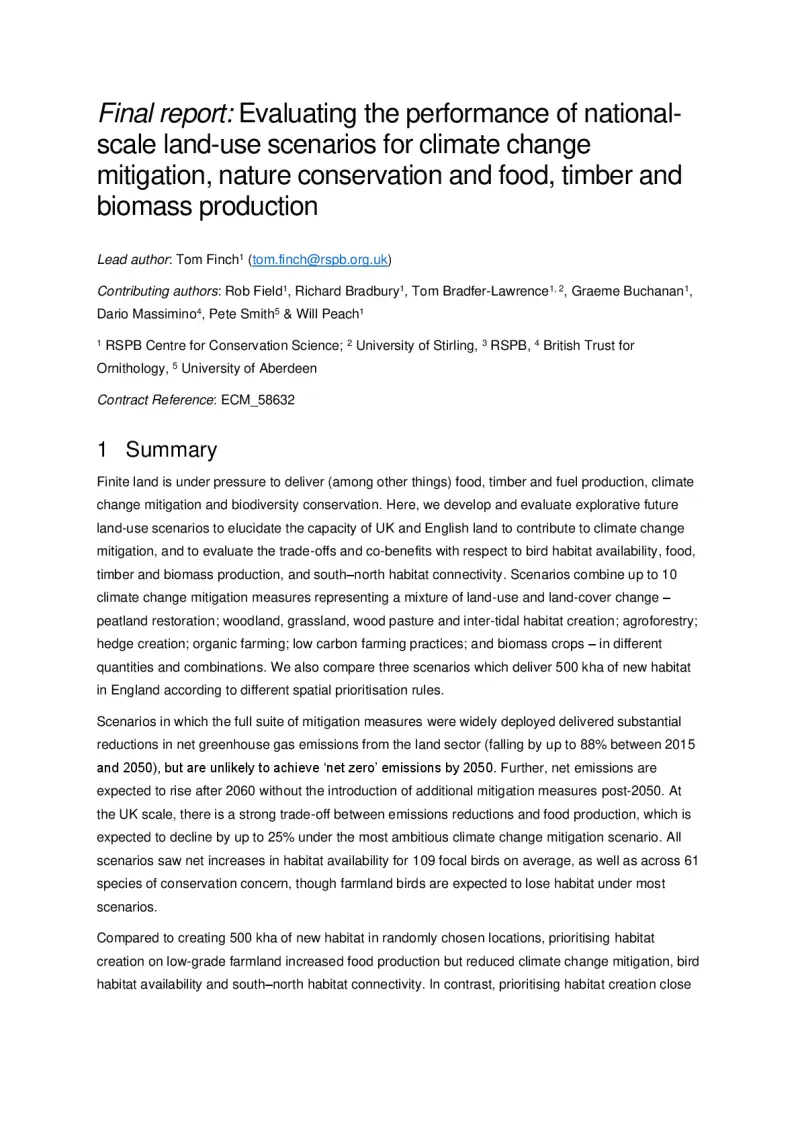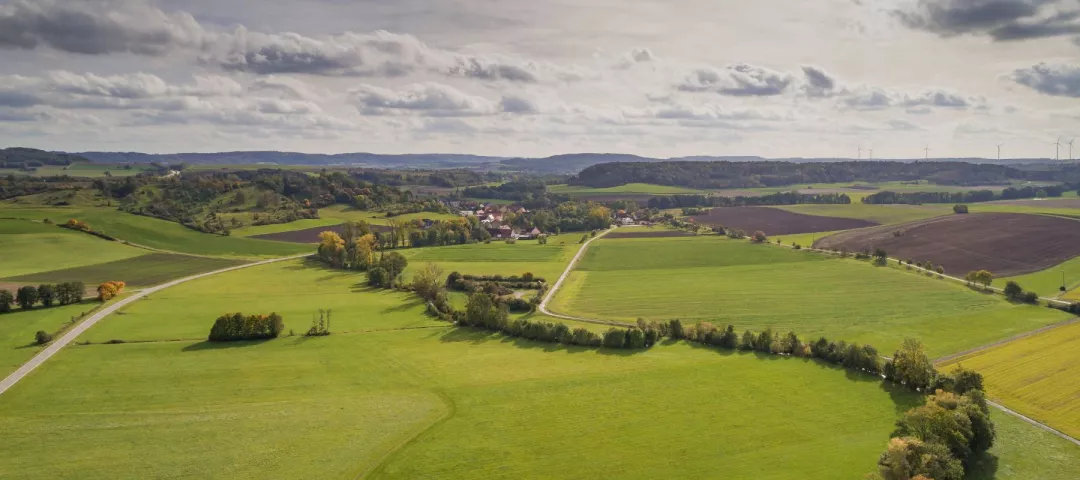Evaluating England land-use scenarios for climate change mitigation, nature conservation, food, timber and biomass production
The report evaluates land-use scenarios in England to determine their impact on climate change mitigation, biodiversity conservation, food, timber, and biomass production, highlighting synergies and trade-offs across sectors.
- Other
- 2014-2022
- Environmental impacts


The study developed and assessed nine national-scale land-use scenarios to investigate how UK land, particularly in England, could contribute to climate change mitigation, nature conservation, and the production of food, timber, and biomass. These scenarios were based on a 25-meter resolution land cover raster, updated every five years from 2015 to 2050. A baseline scenario represented land cover in 2015, while the other scenarios introduced various climate mitigation measures such as peatland restoration, woodland creation, agroforestry, organic farming, and low-carbon farming, applied in different combinations and levels of ambition. With over 45,000 potential combinations, the deployment of these measures was spatially optimised to avoid high-value habitats and protect productive farmland while prioritising habitat creation near existing patches.
The study evaluated the effects of these land-use changes on greenhouse gas (GHG) emissions, bird habitat availability, food production, timber, biomass fuel production, and habitat connectivity across the country. The data sources used included the CEH Land Cover Map 2015 for land cover mapping, the Agricultural Land Classification (ALC) for assessing land productivity, and the UK Breeding Bird Survey to measure bird habitat impacts. Additionally, the Woodland Carbon Code Biomass Carbon Lookup Table was used to model woodland growth and carbon sequestration, and emissions factors from existing studies were applied to estimate GHG emissions from peatland restoration and intertidal habitat creation. Nutritional and food production data from sources were used to model food supply and caloric production. These diverse data sources supported a detailed and integrated analysis of the potential environmental and production impacts of the different land-use scenarios.
The scenarios faced limitations such as data uncertainties in biodiversity impacts, unproven scalability of carbon capture technologies, and assumptions on agricultural yield growth, which may affect the accuracy of predictions.
The evaluation revealed significant reductions in net greenhouse gas emissions under scenarios with widespread deployment of climate change mitigation measures. The most ambitious scenarios achieved reductions of up to 88% in emissions by 2050; however, none were able to achieve complete net-zero emissions by this date. Additionally, emissions are expected to rise again after 2060 without further mitigation efforts. There were clear trade-offs between emissions reductions and food production, with the most ambitious mitigation scenario leading to a decline in food production by up to 25%.
The evaluation also found notable increases in habitat availability for birds, with particular benefits for woodland birds. However, farmland birds were projected to lose habitat under most scenarios, signalling potential negative impacts on species dependent on agricultural land. The evaluation highlighted the potential of nature-based solutions to address both climate change and biodiversity objectives, while underscoring the long-term challenges of sustaining these gains and redesigning the food system to accommodate these land-use changes. Prioritizing habitat creation in low-grade farmland increased food production but limited climate mitigation and biodiversity benefits. Conversely, habitat creation near population centres improved climate outcomes but decreased food production. Overall, the evaluation demonstrated the complexity of balancing climate, biodiversity, and agricultural objectives across limited land resources.
Author(s)
Lead author: Tom Finch. Contributing authors: Rob Field, Richard Bradbury, Tom Bradfer-Lawrence, Graeme Buchanan, Dario Massimino, Pete Smith, Will Peach
Resources
Documents
Evaluating the performance of nationalscale land-use scenarios for climate change mitigation, nature conservation and food, timber and biomass production
(PDF – 1.37 MB – 21 pages)